Murdered Salvadoran Archbishop Óscar Romero canonised
- Published
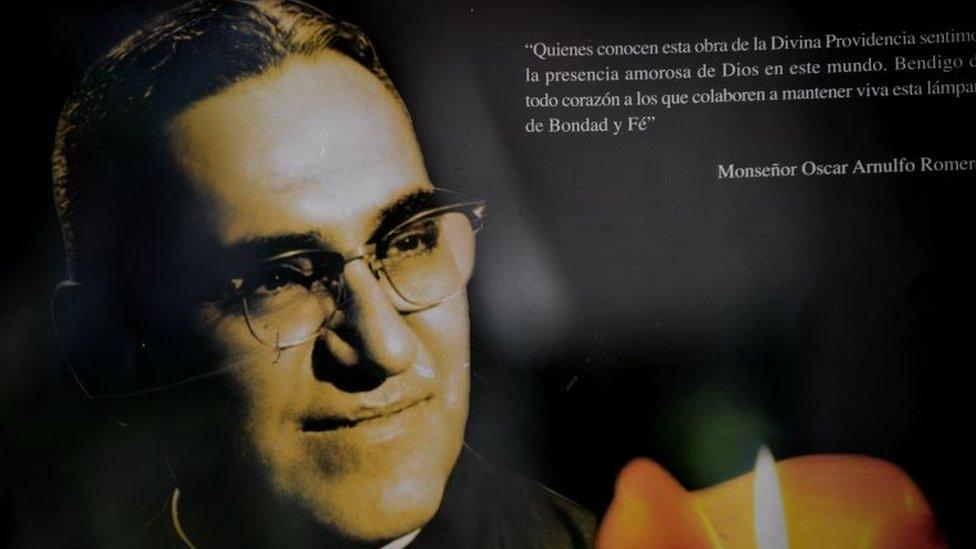
Archbishop Romero is revered across Latin America as a champion of the poor
Pope Francis has conferred sainthood on murdered Salvadoran Archbishop Óscar Romero at a ceremony in the Vatican.
He praised the cleric - an advocate for peace during El Salvador's civil war - for sacrificing his own safety to be "close to the poor and his people".
Óscar Romero was killed by soldiers while giving Mass in 1980. His killers have never been brought to justice.
Pope Francis also canonised Pope Paul VI, known for making reforms to the Catholic Church in the 1960s.
The bestowing of a sainthood onto Archbishop Romero has long been called for by Catholics in the region, the BBC's Will Grant reports.
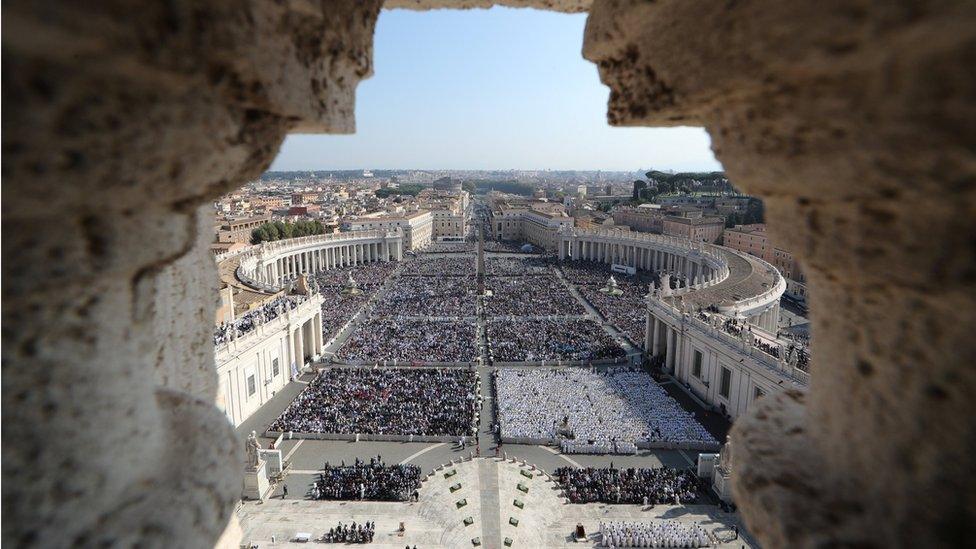
Thousands of pilgrims gathered Sunday to pay tribute to the new saints
What is happening today?
Pope Francis led a ceremony to elevate the two men, and five others, to sainthood in Saint Peter's Square.
"We declare and define Paul VI and Óscar Arnulfo Romero Galdámez... to be saints and we enrol them among the saints, decreeing that they are to be venerated as such by the whole church," he told a crowd of 60,000 people, including multiple heads of state.
The pope wore the blood-stained rope belt worn by Archbishop Romero when he was murdered and used the chalice and pastoral staff of Pope Paul VI.
The Argentine pontiff, Latin America's first, has hailed both men for their bravery during difficult times and their dedication to social justice and the oppressed.
Among the other newly appointed saints include an Italian orphan who died of bone cancer aged 19 and a German nun.
Thousands of pilgrims gathered to pay tribute to the new saints, including some 5,000 Salvadorans.

Archbishop Romero and Pope Paul VI have been elevated to sainthood
Who was Óscar Romero?
Archbishop Romero was beatified in May 2015 in a ceremony in El Salvador which drew huge crowds.
For the faithful, his power came from the fact he criticised both sides of the El Salvadoran conflict, which started in 1980, for any actions that affected civilians.
When the US-backed Salvadoran army was using death squads and torture to stop leftist revolutionaries from seizing power, he used what would become his last homily to speak out against it.

Many in the region see him as the saint of central America
"The law of God which says thou shalt not kill must come before any human order to kill. It is high time you recovered your conscience," he said, calling on the National Guard and police to stop the violence.
"I implore you, I beg you, I order you in the name of God: Stop the repression."
The next day, on 24 March 1980, Archbishop Romero was shot dead as he celebrated Mass in a hospital chapel.
His death horrified the world and escalated the violence in El Salvador that spiralled into a 12-year civil war that claimed 75,000 lives.
Many Salvadorans are still angry that 38 years later, Archbishop Romero's killers have never faced justice because of a 1992 amnesty law.
He is still despised by some on the far right, who describe him as a "guerrilla in a cassock".
Who was Pope Paul VI?
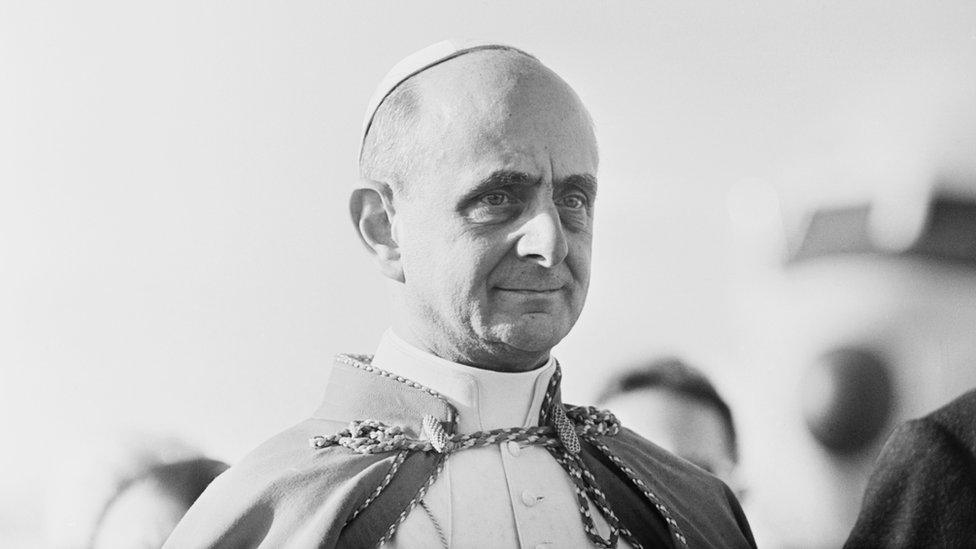
Pope Paul VI brought about sweeping changes as part of Vatican II but opposed birth control
Born Giovanni Battista Montini in the Lombardy region of Italy in 1897, Pope Paul VI was beatified in 2014.
Elected pope in 1963, he continued the reforms of his predecessor, John XXIII, until his death in 1978. The reforms, brought in by the Second Vatican Council or Vatican II, changed the relationship between the Catholic faithful and priests.
Mass, which had been celebrated in Latin, was translated into the language of the congregation and priests faced church goers instead of the altar.
During his 15-year pontificate, Pope Paul VI wrote seven encyclicals.
One of them, Humanae Vitae (Of Human Life), published in 1968, was highly controversial due to its opposition to birth control and led to protests around the Catholic world.
- Published7 March 2018
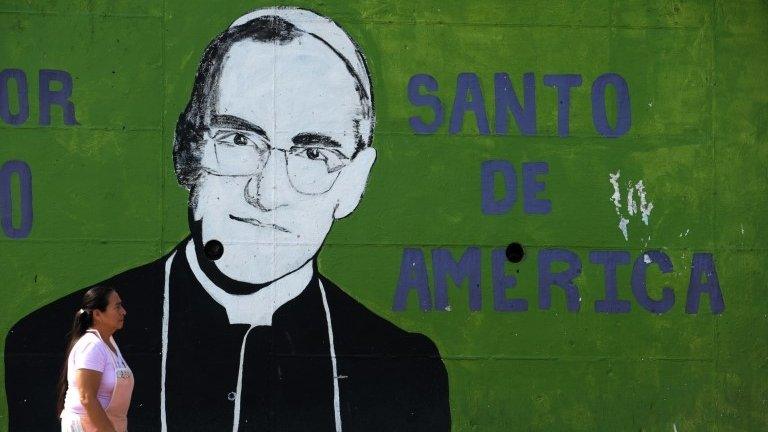
- Published23 May 2015
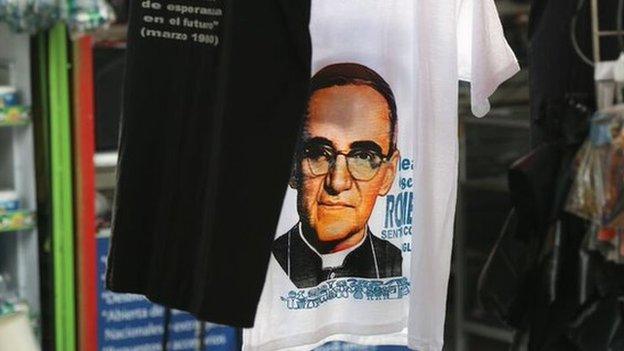
- Published3 February 2015
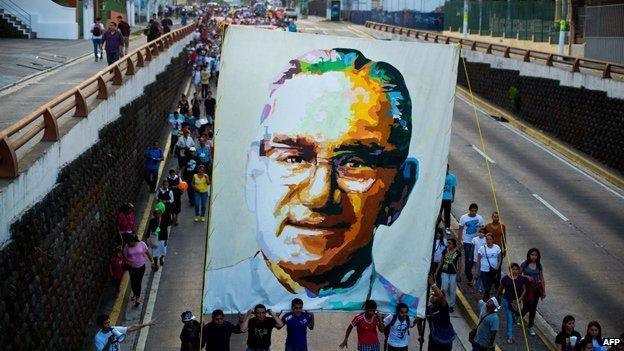
- Published12 October 2012
